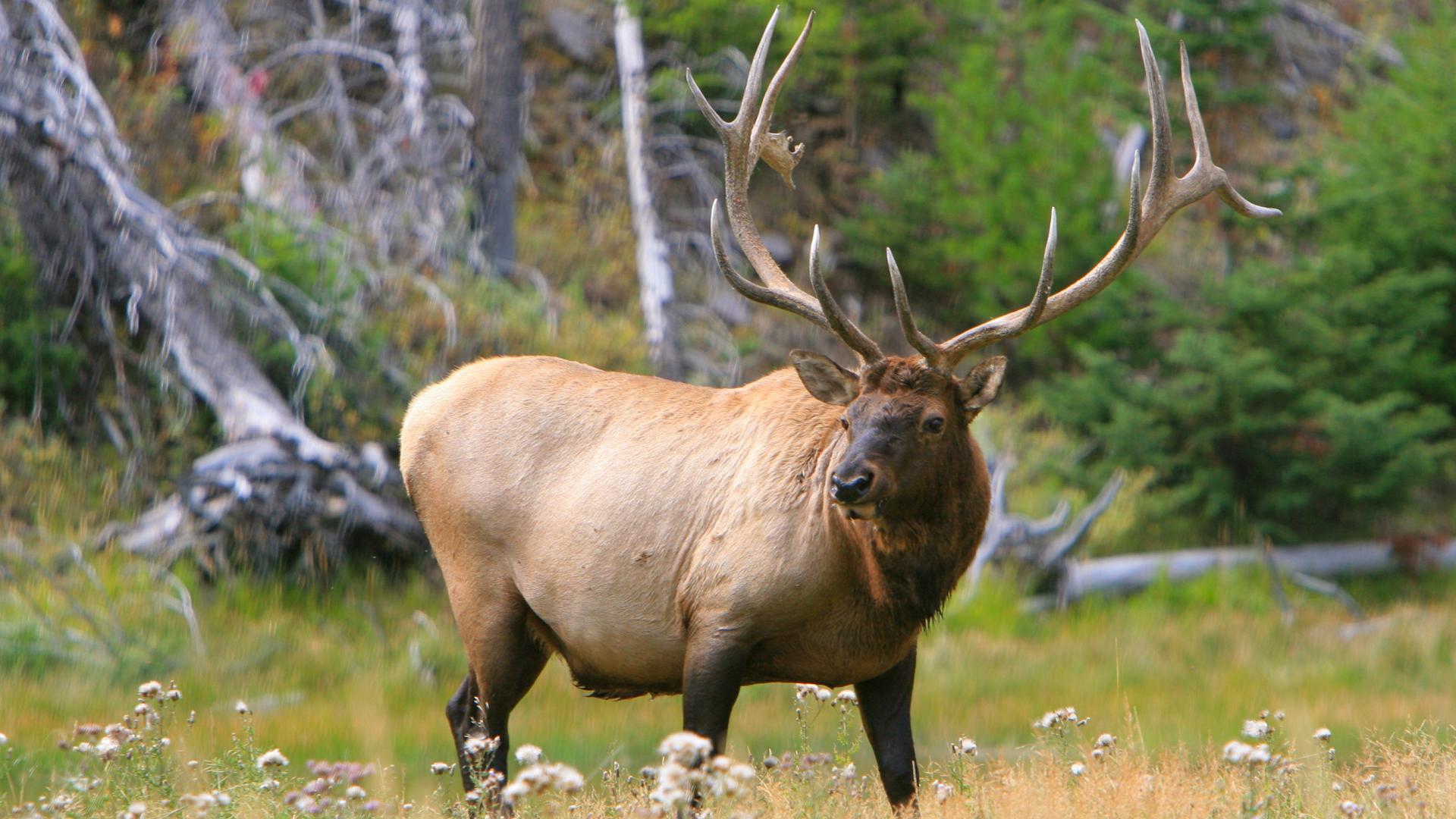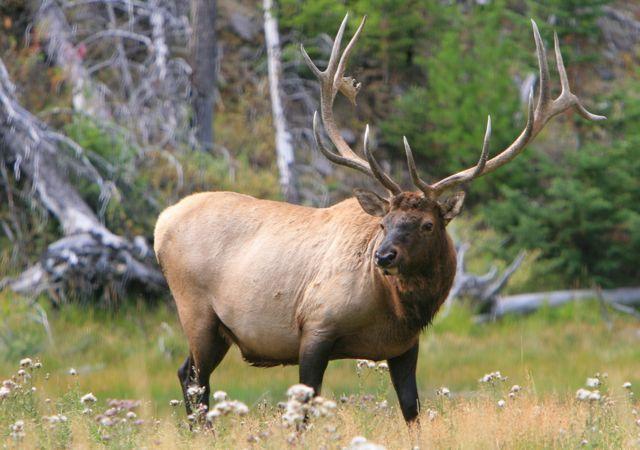Trophy wanted
Whether you’re after a magnificent wall hanger or your name in the record books, here's where to pursue the biggest of Canada’s big game
Advertisement
Lurking deep in the heart of every hunter is surely the burning desire to one day take a trophy animal, the biggest and best of the species. While most hunters focus on putting meat in the freezer, confined by time and money, the challenge of hunting can’t help but lead to a desire to fool the oldest and wisest animals. And it’s these sage creatures—whose survival instincts have seen them through challenging weather, altered habitats and countless predators—that grow the largest headgear and skulls, the typical yardsticks by which we measure and compare trophies.
Let’s for one minute accept that most of us who hunt would like to harvest at least one animal that would be recognized by Boone and Crockett Club as among the best in class. Just where in Canada should you go to maximize your odds of taking such a trophy-book animal? A review of B&C’s scoring records for Canada reveals that trophies are periodically taken almost everywhere a particular species is found, but that some regions definitely produce a greater percentage of the largest animals. Here’s where, when and how to bring home that trophy of a lifetime.
Advertisement
For complete details on seasons, licensing and other regulations for the following hunts, please contact the relevant wildlife authorities listed below.
Before You Go
Before you head out, ask yourself how you’ll reach out for help if you need it. We recommend carrying a satellite GPS messenger. The SPOT Gen3 is a rugged and portable device which provides location-based messaging and emergency notification technology that allows you to communicate from remote locations, beyond cellular. It lets family and friends know you’re OK or sends emergency responders your GPS location along with a request for urgent assistance, all at the push of a button. You can also send pre-programmed text messages or use tracking features which allow friends and family to follow your adventure in near real-time on the web, using SPOT Shared Pages. Worry less about the terrain where you’re tracking big game and the potential mishaps and more about that prize trophy.
WHITE-TAILED DEER
West-central Saskatchewan
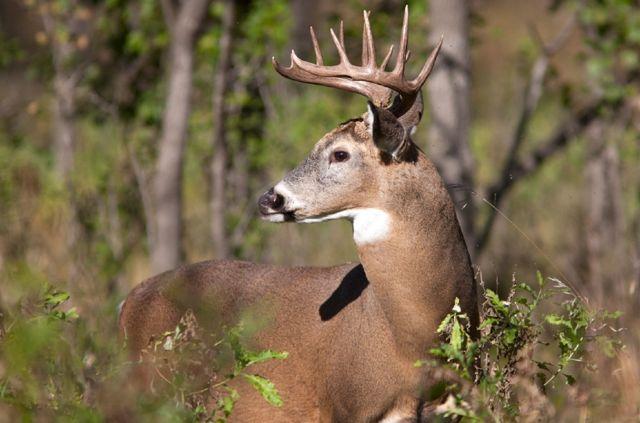
Beyond their status as Canada’s most popular—and populous—big-game animal, white-tailed bucks are equal parts beauty, brawn and cunning. Fooling a veteran on his home turf anywhere in the country is no simple feat, which explains in part why they rank as our number one trophy. But for the biggest of the best, the record books point to the forest fringe habitat in and around Saskatoon, Prince Albert and Meadow Lake in west-central Saskatchewan.
Advertisement
Home to three of the top four typical white-tailed bucks taken in North America during the last 20 years, the region is clearly Canada’s top producer of giant whitetails. Indeed, there’s the possibility of meeting a descendant of Milo Hansen’s famous 1993 bruiser—at 213⅝, it still stands as the largest buck ever taken. And while Saskatchewan may rank fourth on the list of provinces and states in terms of the total number of record-book animals taken over the last two decades, it undeniably emerges at the top once you factor in the number of hunter-days invested.
The region boasts all the ingredients for consistently producing wall hangers: good genetics, relatively light hunting pressure and a perfect blend of agricultural crops for food and dense mixed-wood forests for cover and security. It can be tough hunting, though, given the frequent heavy snowfalls, frigid temperatures and comparatively low deer densities. But baiting is permitted in Saskatchewan, tipping the scales somewhat when compared with the rest of the Prairie provinces. Here, the patient and determined hunter is likely to be rewarded in a manner unparalleled across the whitetail’s entire continental range.
When
Bucks are most susceptible during the rut, meaning the middle two weeks of November is prime time.
Tactics
Tough as it can be on the constitution, hunting from treestands or ground blinds has proven to be the most effective. It’s a test of patience and vigilance, and you’ll face long, lonely days with little activity. But in good habitat, the odds are high you’ll see at least one superb buck.
Gear
A mature northern buck can top 300 pounds, so appropriate calibres range from .25-06 to the .300 magnums. Well-constructed bullets are a must, especially when shooting at close range from a stand. Clothing designed for extreme temperatures, from insulated boots to wool balaclavas, is essential.
More info
- Ministry of Environment, 1-800-567-4224, www.environment.gov.sk.ca
- Saskatchewan Outfitters Association, (306) 668-1388, www.soa.ca
MULE DEER
Alberta prairie
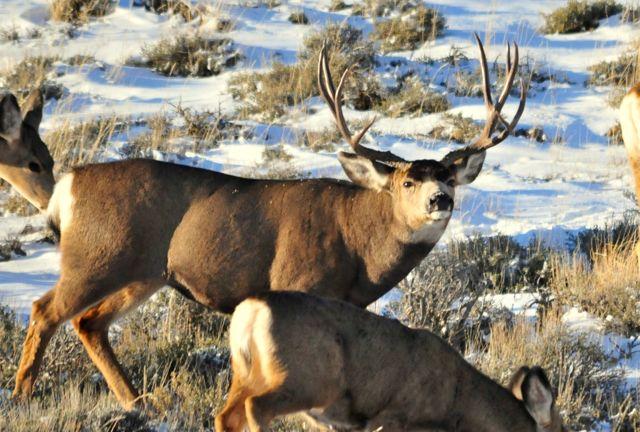
Experienced outfitters will tell you that a record-book mule deer is among the most challenging to find of North America’s big-game trophies. The records suggest Saskatchewan is our nation’s best bet for tagging a trophy mulie, ranking third in the continent based on qualifying entries over the last 20 years. Unfortunately, non-resident hunting for mule deer is not permitted in Saskatchewan. Not to worry, as Alberta has been giving up a tremendous number of quality mulie bucks of late.
Mule deer are widely distributed in the province, but the prairie land south of the Red Deer River is generally considered the most consistent producer of trophy-sized animals. Mule deer feel right at home in the many river valleys and coulees, and that can pose a challenge for hunters. For starters, the undulating landscape means the deer can easily go undetected. Plus, the steep topography can be a daunting obstacle for all but the fittest hunters.
The quality of Alberta mule deer bucks is undeniable. The number one all-time non-typical mule deer is an Alberta buck, for example. But that record was set in 1926, making it one of the longest-standing North American trophies. Examining more recent records, 51 typical mule deer from Alberta have been registered in the last 20 years, with the top 10 ranging from 196 to 206 B&C points.
When
The open season for rifle hunters is restricted to the month of November, which is just fine, as it coincides with the rut. Late-season weather can push does into the agricultural fields, and where the does go during the rut, the bucks are sure to follow.
Tactics
Mulie hunting is a spot-and-stalk game. Hunters cover a lot of ground glassing likely locations. Once a trophy buck is identified, it’s time to devise a plan to get within range using available terrain as cover.
Gear
Shots can be long, and mule deer bucks are deceptively big and tough. The best calibres, therefore, begin at .270 and extend up to the .300 magnums. Dress in layers, as you may face long hours of stationary glassing followed by strenuous stalks.
More info
- Ministry of Environment and Sustainable Resource Development, 1-877-944-0313; www.srd.alberta.ca
- Alberta Professional Outfitters Society, (780) 414-0249; www.apos.ab.ca
ELK
Eastern Slopes, Alberta
For many hunters, the dream of one day tagging a trophy bull elk only dies when they do, since the taking of any mature elk is a noteworthy achievement. These animals have plenty in their favour when weighing the balance of power with hunters: they tend to exhibit more seasonal migration than most of our big game; they’re gregarious by nature, making for many eyes, ears and noses working together in unison; and they love their collective solitude, which leads them to hide the day away in dense, remote cover. Want to fool a book-qualifying animal? Well, let’s just say you’ve got your work cut out for you.
But if you’re bound and determined to take a trophy elk, your best bet by far is to head to the Eastern Slopes of Alberta’s Rocky Mountains. In the last 20 years, only 17 typical elk from Canada have earned recognition in B&C’s record books, and 15 of those came from Alberta. The Wild Rose province also makes a dent in the top 20 elk of all time, holding down the eighth and 12th spots. That’s very impressive when you consider the competition from the popular elk states south of the border.
As to where exactly to set your sights, the records tell us that huge elk have been taken just about everywhere they’re found along Alberta’s Eastern Slopes—making a trophy hunt all the more challenging. And rewarding.
When
The peak of the elk rut across much of Alberta falls around the middle two weeks of September, making it the best time for calling. Alternatively, if you hunt as late in the season as regulations allow, you should find elk congregating and moving to their winter ranges in lower elevations.
Tactics
Few hunting experiences are as thrilling as calling an elk in to close quarters. Typically, you locate a bull by challenging him with a bugle, then lure him in tight with cow calls. Late in the season, it’s all about the ambush. Figure out where elk are bedding and feeding, then intercept them somewhere in between.
Gear
Elk are arguably our toughest big-game animals, and in many habitats shooting distances can be relatively long. Seasoned elk hunters will tell you that the best calibres start with the .300 magnums and extend up to the .338s. Whether you’re hunting early or late in the season, be prepared for weather extremes in the varying elevations of Eastern Slopes elk habitat.
More Info
- Ministry of Environment and Sustainable Resource Development, 1-877-944-0313; www.srd.alberta.ca
- Alberta Professional Outfitters Society, (780) 414-0249; www.apos.ab.ca
CANADA MOOSE
Northern B.C.
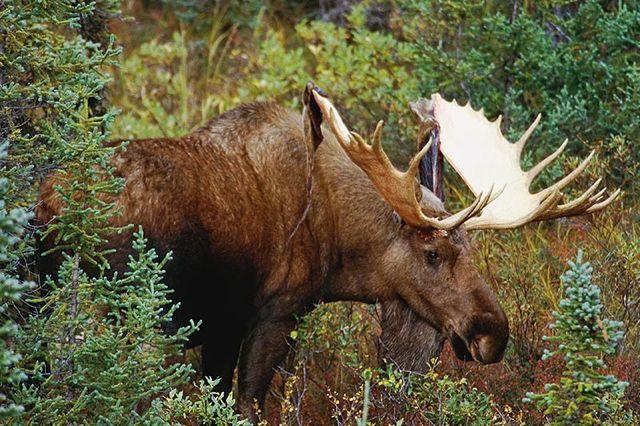
Moose may well be the quintessential all-Canadian big-game animal. They’re widely distributed from coast to coast and capable of sporting tremendous antlers across their range—six provinces are represented in B&C’s list of the top 20 qualifying animals over the last 20 years. But as home to 12 of those top 20 moose, B.C. is indisputably the place to go if you want to put one in the books. Or more specifically, northern B.C. should be your destination. Of the 10 biggest moose, six came from this area, including a bull taken in 2002 that scored 240 6/8, the second-highest score ever recorded.
Here, broad river valleys cut through towering mountain landscapes pockmarked with high-altitude lakes, all making for remote and productive habitat that allows bulls to grow old—and huge. Three areas stand out in the record books as the top producers of trophy animals: the Dease Lake, Cassiar Mountains and Tatshenshini River regions, all of which are closer to the Yukon than any major B.C. community. When you compare the top 10 bulls from each province, it’s telling that even the smallest of B.C.’s top 10 is on par with the largest bulls taken anywhere else.
When
Hunters will want to take advantage of the rut, with the last 10 days of September and the first few of October heralding the peak. Because this is challenging country with difficult access, poor weather can keep you out of the backcountry after mid-October.
Tactics
Successful trophy hunters employ one of two methods here. Some prefer to call bulls to them, mimicking the mournful bawl of a lonely cow. Alternatively, you can climb high and glass—the broad pans of a bull’s antlers are distinguishable from a great distance. Spot one you like, then stalk to within range.
Gear
When you’re this far north and in mountainous terrain, dress for everything from snow to high winds to stifling heat. As for guns and loads, the practical minimum for these large-bodied animals starts with the .30-06 and .300 magnums; a .375 is not too much gun if you can shoot it.
More Info
- Fish, Wildlife and Habitat Management Branch, (250) 387-9771); www.env.gov.bc.ca/fw
- Guide Outfitters Association of B.C., (604) 541-6332; www.goabc.org
ALASKA-YUKON MOOSE
Ogilvie Mountains, Yukon
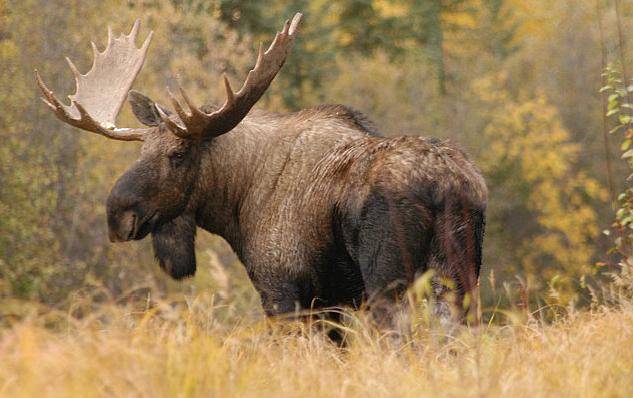
The Alaska-Yukon moose is the largest moose subspecies and the largest member of the deer family on the planet. As the name implies, it’s found predominantly in Alaska and the Yukon. While the scientific community restricts this subspecies in Canada to the western Yukon, the record books classify moose from southwestern N.W.T in the same category.
To give yourself the best chance at having your name inked into the books, you’ll want to head to the Ogilvie Mountains in the Yukon’s northwest, a region north of Dawson City abutting the border with Alaska. As with any area that consistently produces huge moose, access here is restricted. The famous Dempster Highway is the only true road through the Ogilvies, so getting back into the best moose ranges means you must fly in.
How does the Yukon stack up against its American neighbour when it comes to huge moose? Over the last 20 years, Alaska has produced 15 of the top 20 bulls, while the Yukon has yielded four. It must be noted, however, that hunter numbers in Alaska are more than twice those in the Yukon.
Is the Alaska-Yukon moose hunting as good today as it once was? Well, of the top 50 all-time moose on record, 29 were taken since 1980, suggesting the hunting is better today than ever before. And consider: there are twice as many moose in the Yukon as there are people, and 20 times more moose than hunters. Get to the Ogilvies and see for yourself—that magical 60-inch antler spread is more common than you might think.
When
While the season begins in August, the best time is from around September 7 to the end of the month. Bulls will have shed their velvet by then, making them easier to spot from afar. As well, the rut will be in full swing through the latter half of the month.
Tactics
Spot-and-stalk is preferred during the pre-rut, whether from above on mountain slopes or from below along river and lake edges. Once the rut kicks in, calling is the preferred method—in this tough country, it’s always better if you can get the bull to come to you.
Gear
Rifles from the .300 calibres and up are adequate, though you can’t have too much gun for these behemoths. As with mountain hunting anywhere, come prepared for any weather imaginable.
More Info
- Environment Yukon, (867)-667-5652; www.env.gov.yk.ca
- Yukon Outfitters Association, (867) 668-4118; www.yukonoutfitters.net
BLACK BEAR
West-central Saskatchewan
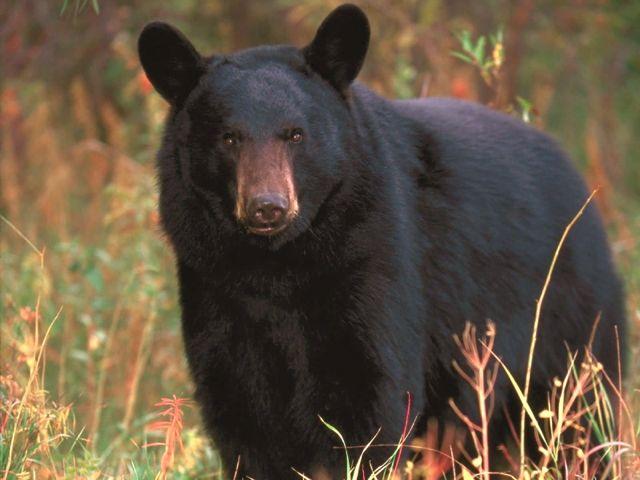
It can be challenging to determine whether a black bear qualifies as a trophy, as there’s little correlation between body size and skull size—and when it comes to the B&C records, it’s the skull that matters. So, just because a bear may be large in body, it doesn’t automatically make it a trophy.
If you head to west-central Saskatchewan, however, the odds are good that big blackie in your sights just might be record-book quality. No province has put as many bruins—164 in all—into the books over the last two decades than Saskatchewan. Narrowing it down, the spot-on-the-spot appears to be Bronson Lake, just southwest of Meadow Lake, where eight qualifying bears have been logged.
The formula for growing big black bears appears to be equal parts genetics, food quality and quantity, and large tracts of forested cover allowing the bears to go about their business undisturbed. Certainly, some areas—most notably Vancouver Island, with its long growing season and high productivity—produce plenty of huge-bodied bears, but those animals don’t make the record book with anywhere near the frequency that west-central Saskatchewan’s bruins do.
As an added bonus, this region of Saskatchewan boasts good numbers of coloured bears, including browns, chocolates and even blonds. Requiring a minimum score of 21 (combined skull length and width measured in inches), Saskatchewan’s best bear in the last two decades was a boar scoring 22 & 11/16ths. It was taken, as you might have guessed, near Bronson Lake.
When
The last three weeks of May consistently produces trophy bears, with boars on the move seeking rich food after a long winter’s rest. The longer into the spring you go, the more likely the bear’s fur will be rubbed, diminishing the quality of your rug.
Tactics
Baiting is the preferred tactic for spring bear hunting in this region, meaning treestands or ground blinds for the hunter. It’s not uncommon to see many different bears each day, the patient hunter is rewarded with the biggest bruin. Spot-and-stalk hunting along right-of-ways or south-facing slopes can also be effective.
Gear
Baiting is ideal for those looking to hunt with archery equipment, but rifles, smokepoles and even shotguns with slugs are also effective. Rifle hunters should select calibres from .270 on up, using well-constructed bullets. The weather is usually mild, and travel minimal, so there’s little need for specialized clothing.
More Info
- Ministry of Environment, 1-800-567-4224; www.environment.gov.sk.ca
- Saskatchewan Outfitters Association, (306) 668-1388; www.soa.ca
MOUNTAIN CARIBOU
Mackenzie Mountains, N.W.T.
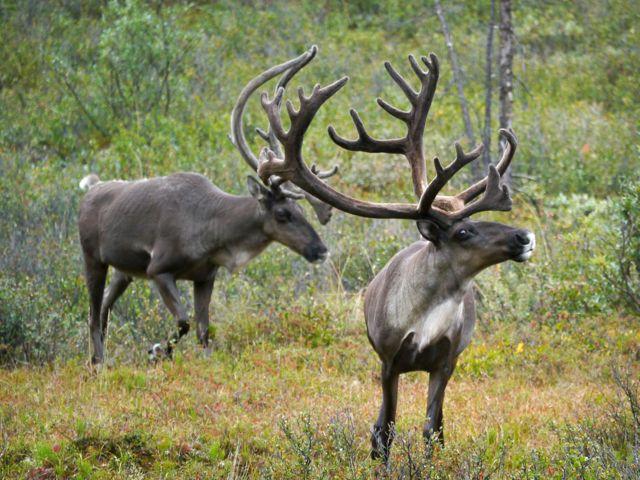
Scientists tell us that mountain caribou are a variety of woodland caribou, but the hunting community classifies them separately. There are only three jurisdictions on the continent that offer mountain caribou—B.C., the Yukon and the N.W.T.—and each has an argument for staking its claim as the best bet for finding record-book animals.
During the last 20 years, the Yukon has produced 11 of the top 20 animals, with the N.W.T. boasting seven and B.C. the remaining two. Further, the Yukon has been home to the two largest specimens ever recorded, and the top 10 caribou taken there in the last 20 years score slightly higher on average than do caribou from B.C. or the N.W.T. On the other hand, B.C. can lay claim to having produced the greatest number of record-qualifying animals over the last two decades—96 in all, just topping the N.W.T.’s 95. The Yukon, meanwhile, trails the pack with 74 qualifiers.
When you look at specific areas in each region, however, there’s no arguing that the N.W.T.’s Mackenzie Mountains offer the very best opportunity to harvest a qualifying animal. This area has surrendered 56 records over the last 20 years, significantly outdistancing B.C.’s Cassiar Mountains in second place at 18. The reason the Mackenzies are the number one destination for trophy mountain caribou? Good genetics and light hunting pressure.
When
Mid-August through to late September is prime caribou season. In August, the antlers will be hard, but still in velvet. By September, the velvet has been stripped and the caribou have generally migrated to lower elevations.
Tactics
Mountain caribou are the most physically demanding of all the caribou subspecies to hunt. This is spot-and-stalk hunting in vast, steep terrain. Heading in on horseback is one option, and some outfitters use dogs to help pack in gear, but whatever the case, expect to put many miles on your soles.
Gear
As with any mountain hunt, bring appropriate layers and outerwear for all manner of weather. And quality footwear is a must for this mountainous terrain. Mountain caribou are considerably bigger and tougher than their subspecies kin, and shots can be at extended distances. Accordingly, appropriate calibres range from the 7mm magnums through to the .300 magnums.
More Info
- Environment and Natural Resources, (867) 920-8046; www.enr.gov.nt.ca
- Association of Mackenzie Mountain Outfitters, www.huntnwt.com
WOODLAND CARIBOU
Northern Peninsula, Newfoundland and Labrador
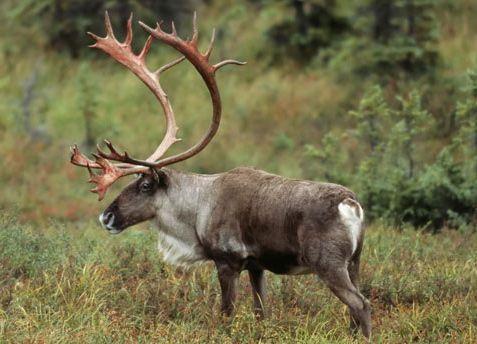
As the island of Newfoundland is the only jurisdiction in the world that still offers non-resident woodland caribou hunting, it stands to reason it’s your best bet to tag a record-book qualifying animal. And while the Rock’s caribou, like many other populations across North America, have seen a decline in recent years, the prospects for taking a trophy-quality animal are still good for those willing to put in some time.
The place to go is the Northern Peninsula. This is rugged, mountainous country, cross-stitched with lakes, streams and rivers that make travel a challenge; access is limited in many areas without the assistance of aircraft. But the caribou are spectacular, with antlers typically larger than those found on woodland caribou anywhere else.
Over the last 20 years, 222 Newfoundland caribou have qualified for B&C’s record book, stark evidence that the good times are not long gone. Also during that period, the fourth, sixth and eighth all-time bulls were taken on the island. Deer Lake, at the southern end of the Northern Peninsula, is the jumping off point and good hunting can be found nearby. Farther up the peninsula, communities that serve as access hubs into quality caribou habitat include Daniel’s Harbour and Parson’s Pond.
When
September and October are prime months. Later during this time can be best, but with every passing week, the weather becomes more of an issue.
Tactics
Woodland caribou hunting is a spot-and-stalk endeavour. Hunters must be prepared to traverse uneven terrain, glassing from the high ground as they go. In some areas, travel by boat allows access into relatively unpressured areas.
Gear
Rifle hunters are well equipped with calibres ranging from .270 up to the .300 class. Waterproof boots that you can walk in all day are a must, as is quality raingear.
More Info
- Department of Environment and Conservation, 1-800-563-6181;www.env.gov.nl.ca
- Newfoundland and Labrador Outfitters Association, 1-866-470-6562; www.nloa.ca
CENTRAL-CANADA BARREN-GROUND CARIBOU
Northern Manitoba
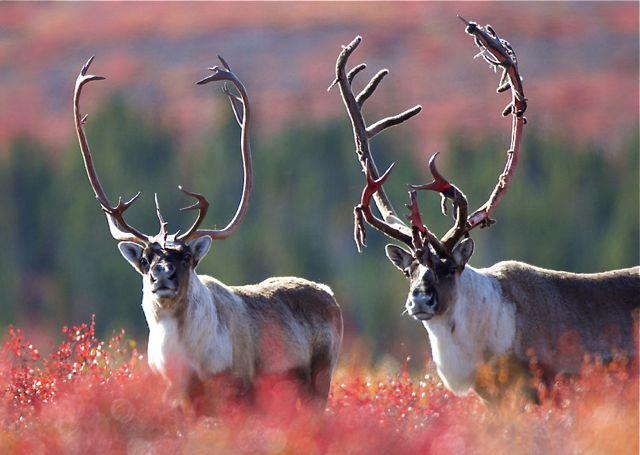
The historic hot spot for central-Canada barren-ground caribou has long been recognized as the N.W.T., in particular the areas around MacKay, Courageous, Humpy, Little Marten, Point and Jolly Lakes. The key attribute these regions share is location—they all lie 200 to 300 kilometres northeast of Yellowknife in the heart of the legendary Bathurst herd’s annual migratory route. It’s no secret, however, that this herd has experienced a significant population decline in recent years. While it has now stabilized and even realized a modest increase, hunting remains suspended as wildlife managers continue to rebuild the herd.
But fear not. Northern Manitoba continues to offer excellent hunting opportunities for Canada’s most popular caribou subspecies. Over the last two decades, 39 Manitoba caribou have made it into the B&C record books—the second highest number of animals next to the N.W.T. The best, a bull measuring 399 6/8, ranks as the 21st largest ever taken and the 12th largest killed anywhere during the last 20 years.
When it comes to finding record-class bulls, Commonwealth Lake, Nejanilini Lake and Schmok Lake, all located near the Nunavut border, are the places to go. All hunters owe it to themselves to experience this hunt, arguably Canada’s most popular and accessible caribou hunt. The migration of barren-ground caribou is a sight experienced nowhere else in North America, and each day hunting in the land of the midnight sun is as relaxing as it is rewarding.
When
September is prime time, although the season extends into mid-October. Expect antlers to still be in velvet early in the month; by mid-September, most have been stripped clean.
Tactics
With the majority of camps, the hunt is staged from the water, cruising lakes in search of caribou on the move across the open landscape. Once animals are spotted, you hit the shore and begin your stalk. The tundra, though appearing featureless to the uninitiated, has plenty of relief, generally allowing hunters to get in close if they choose to.
Gear
These caribou are an ideal quarry for bowhunters, but rifle and blackpowder hunters will come away equally rewarded. They’re not large or particularly tough animals, and suitable calibres start at .25-06 and go up to the .30 calibres.
More Info
- Conservation and Water Stewardship, 1-800-214-6497; www.gov.mb.ca/conservation
- Manitoba Lodge and Outfitters Association, 1-800-305-0013; www.mloa.com
QUEBEC-LABRADOR CARIBOU
Western Ungava Peninsula, Quebec
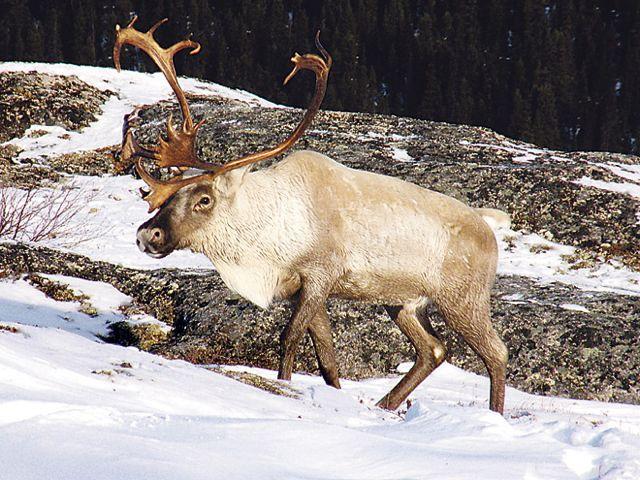
The recent travails of Quebec-Labrador caribou populations have been well documented, particularly the declining numbers in the George River herd. But fortunately the Leaf River herd, whose range overlaps with that of the George caribou, is doing much better. Plus, it continues to offer outstanding hunting.
As the animal’s name suggests, Quebec-Labrador caribou are indeed found in Labrador, but Quebec has long been the epicentre of hunting for this subspecies. Of the 199 Quebec-Labrador caribou entered in the B&C record book during the last 20 years, 185 were taken in Quebec. And the very best locations are all found on the western Ungava Peninsula.
These caribou have always been less predictable in their movements than their brethren from the N.W.T., so camp operators here have learned to be mobile. As a result, record-book qualifying specimens have come from a wide range of area lakes and rivers. Tops among them, however, are Minto and Mollet Lakes and the Caniapiscau and Leaf Rivers.
Veterans of the area will tell you that the best hunting was in the 1970s and 1980s, and the record books support that notion. However, the fourth largest Quebec-Labrador caribou ever taken was shot in the Ungava region within the last 20 years, so clearly there are still some giants out there.
When
The latter half of August through September is most popular. As with caribou elsewhere, early in the season you can expect antlers, though hardened, to still be in velvet. By September, most will have been stripped clean.
Tactics
This is a spot-and-stalk hunt. In some camps, you’ll glass from boats until moving caribou are found, at which point you’ll hit the beach and begin your stalk. Other camps have excellent hunting literally outside their back doors; you simply walk from camp across the tundra, glassing for animals as you go.
Gear
All northern hunts require clothing for a wide range of weather conditions, and this region promises no less. For rifle hunters, calibres from .270 on up are plenty. Shots are often less than 100 metres, though the opportunity is certainly there to shoot at extended ranges if you so choose.
More Info
- Department of Natural Resources, 1-866-248-6936; www.mrn.gouv.qc.ca
- Quebec Outfitters Federation, 1-800-567-9009; www.quebecoutfitters.com

This big game guide was brought to you by Globalstar, distributors of SPOT Gen3, SPOT Trace and SPOT Global Phone. For peace of mind wherever your hunts take you, including beyond the cellular grid, there’s never been a better time to pick up a SPOT satellite device. SPOT will keep you connected to the people and things that matters most, including emergency services, using the world’s most modern satellite network. Right now you can get a FREE SPOT Device with activation of a service subscription.

